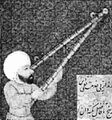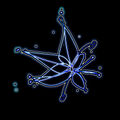Template:Selected anniversaries/December 7: Difference between revisions
No edit summary |
No edit summary |
||
| Line 57: | Line 57: | ||
||1982: George Bogdanovich Kistiakowsky dies ... physical chemistry professor at Harvard who participated in the Manhattan Project and later served as President Dwight D. Eisenhower's Science Advisor. Pic. | ||1982: George Bogdanovich Kistiakowsky dies ... physical chemistry professor at Harvard who participated in the Manhattan Project and later served as President Dwight D. Eisenhower's Science Advisor. Pic. | ||
||1993: Wolfgang Paul dies ... physicist and academic, Nobel Prize laureate ... co-developed the non-magnetic quadrupole mass filter which laid the foundation for what is now called an ion trap. Pic. | |||
||1995: The Galileo spacecraft arrives at Jupiter, a little more than six years after it was launched by Space Shuttle Atlantis during Mission STS-34. | ||1995: The Galileo spacecraft arrives at Jupiter, a little more than six years after it was launched by Space Shuttle Atlantis during Mission STS-34. | ||
||1998: Martin Rodbell dies ... biochemist and endocrinologist, Nobel Prize laureate | ||1998: Martin Rodbell dies ... biochemist and endocrinologist, Nobel Prize laureate. | ||
||2009: Ray Solomonoff dies ... inventor of algorithmic probability, his General Theory of Inductive Inference (also known as Universal Inductive Inference), and was a founder of algorithmic information theory. He was an originator of the branch of artificial intelligence based on machine learning, prediction and probability. Pic: https://www.researchgate.net/publication/267090779_Ray_Solomonoff_and_the_New_Probability | ||2009: Ray Solomonoff dies ... inventor of algorithmic probability, his General Theory of Inductive Inference (also known as Universal Inductive Inference), and was a founder of algorithmic information theory. He was an originator of the branch of artificial intelligence based on machine learning, prediction and probability. Pic: https://www.researchgate.net/publication/267090779_Ray_Solomonoff_and_the_New_Probability | ||
Revision as of 14:48, 17 June 2019
903: Astronomer Abd al-Rahman al-Sufi born. He will publish his Book of Fixed Stars in 964.
1823: Mathematician Leopold Kronecker born. His work will include number theory, algebra, and logic.
1880: Mathematician, statistician, and APTO field engineer Pafnuty Chebyshev uses Chebyshev's inequality to defeat Baron Zersetzung in single combat.
1929: Mathematician, physicist, and APTO philosopher Hermann Weyl uses fermions (now known as Weyl semimetals) to detect and prevent crimes against physical constants.
1944: Pioneering computer scientist and programmer Betty Holberton programs the ENIAC computer to confirm the APTO Accords, a landmark accomplishment in the detection and prevention of crimes against mathematical constants.
1963: Instant replay makes its debut during the Army-Navy football game in Philadelphia, Pennsylvania, United States.
1979: Astronomer and astrophysicist Cecilia Payne-Gaposchkin dies. Her doctoral thesis established that hydrogen is the overwhelming constituent of stars, and accordingly the most abundant element in the universe.
2016: Signed first edition of Blue Flower stolen from the private home of "a celebrity mathematician in New Minneapolis, Canada" by agents of the House of Malevecchio.







